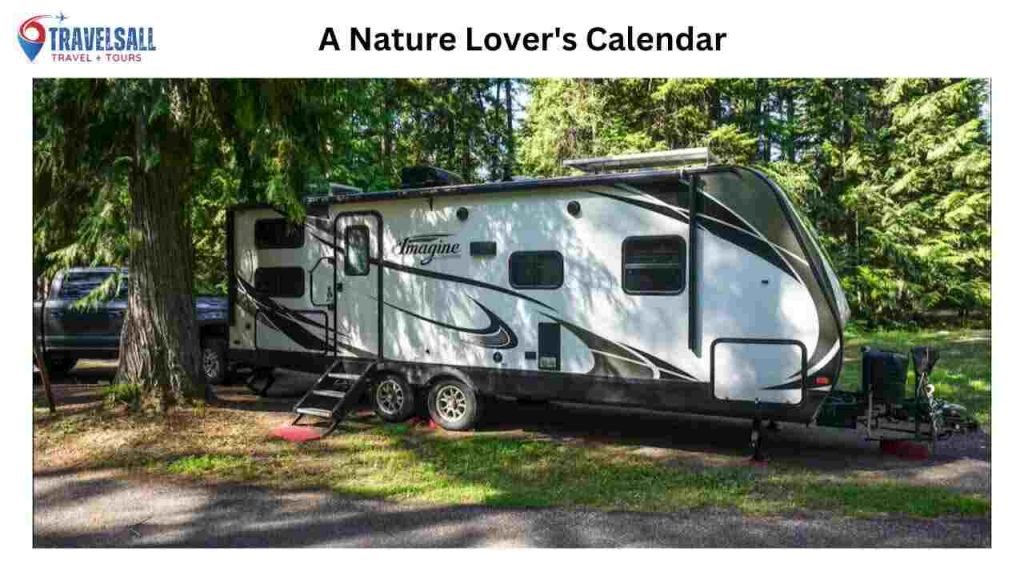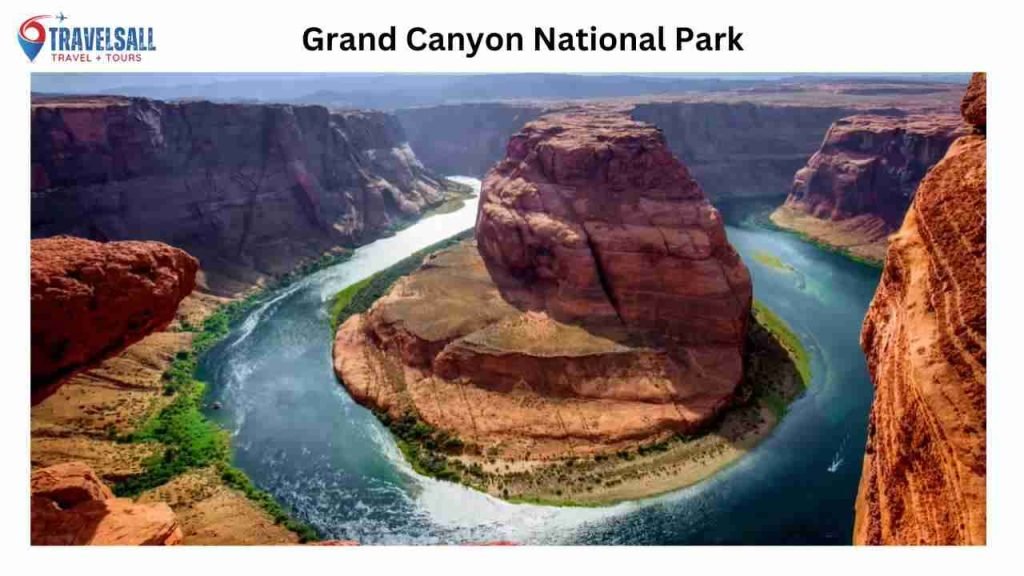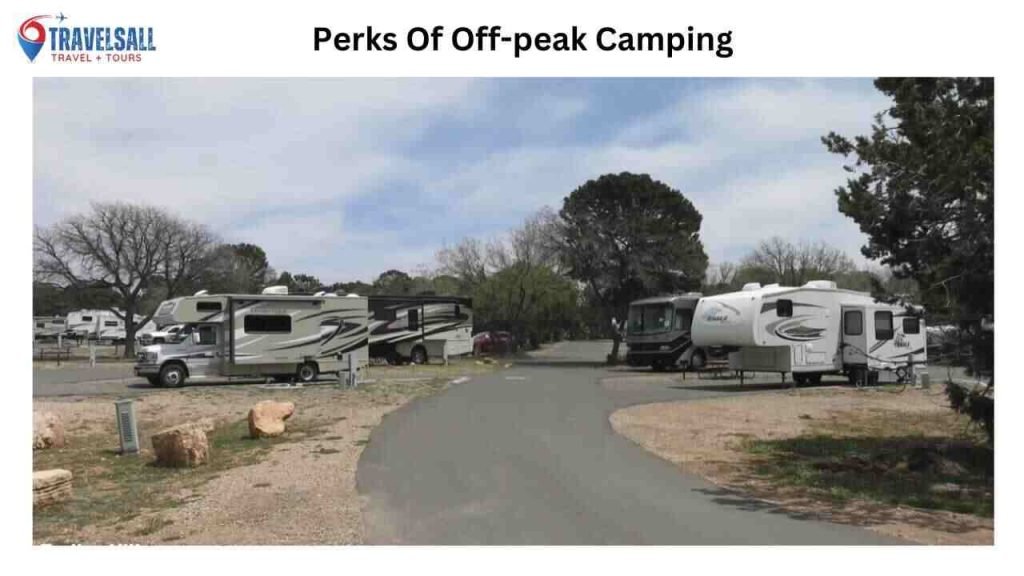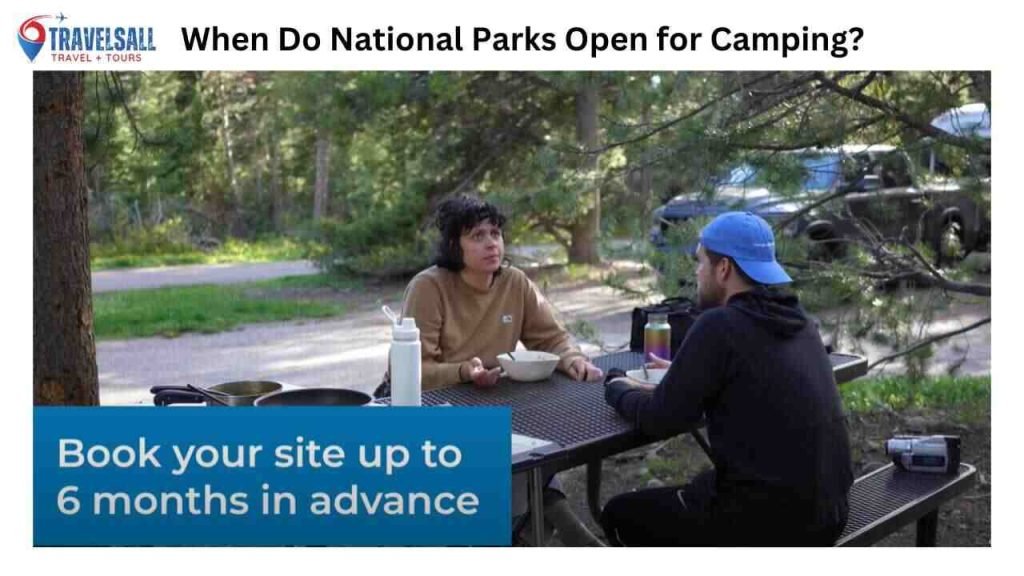National parks open for camping at different times, often depending on seasonal weather and park-specific regulations. Reserve a campsite in most parks through official park websites or recreation.gov.
National parks are a treasure trove for nature enthusiasts and adventure seekers alike.
Each park has its unique charm and array of outdoor activities, including camping under the stars. Planning your camping trip necessitates knowing the opening times, which vary from park to park.
Early reservations are crucial, as sites often book up quickly, especially in peak seasons.
The National Park Service website provides essential information for campers. It includes park opening dates, reservation details, and guidelines for a safe and enjoyable experience.
Before setting out, it’s important to check for any alerts or closures and to be aware of wildlife and ecosystem preservation protocols.
Enjoy the great outdoors by preparing for your journey with due diligence and an adventurous spirit.
Table of Contents
ToggleA Nature Lover’s Calendar

A Nature Lover’s Calendar serves as the ultimate guide for outdoor enthusiasts eager to explore the United States’ majestic national parks.
With diverse ecosystems across the country, these parks offer a bevy of camping opportunities. To make the most of each season, knowing when campgrounds open is key.
Craft your adventure plans with precision thanks to this seasonal breakdown.
Seasonal Availability Of Campgrounds
The openings of campgrounds in national parks depend on the season. Many parks welcome campers in spring, with the peak season being summer.
Autumn brings stunning foliage, perfect for serene camping experiences.
Certain locations close in winter due to harsh conditions, so always check before planning a winter getaway. Here’s a simple breakdown:
- Spring: Campgrounds start to open, with blooming flowers and wildlife.
- Summer: Full operation with all facilities available.
- Autumn: Continued operation, but fewer crowds. Be aware of early closures.
- Winter: Most campgrounds close due to snow and cold.
Year-round Options For The Intrepid
For adventurers undeterred by the cold, some national parks offer year-round camping. These destinations cater to those who find solace in quiet winter landscapes and snow-shrouded peaks.
Pack heavy insulation, and check park alerts for any winter advisories. The following parks are known for their year-round campground availability:
| National Park | Location | Open Campground |
|---|---|---|
| Yosemite National Park | California | Upper Pines |
| Yellowstone National Park | Wyoming | Mammoth Hot Springs |
| Great Smoky Mountains National Park | Tennessee/North Carolina | Cades Cove |
| Joshua Tree National Park | California | Black Rock |
Remember to always verify the latest information on national park websites or visitor centers. Campgrounds are subject to changes due to weather conditions or park maintenance. Nature awaits, so mark your calendars and embark on a camping journey like no other!
Scenic Campsites Unlocked

Welcome to an outdoor enthusiast’s dream season! National parks unveil their scenic campsites, inviting you to connect with nature like never before.
Campgrounds open their doors, offering an escape into wilderness paradise.
Spring Blossoms And Campsite Awakenings
With the arrival of spring, nature bursts into life. It’s the perfect time to explore the great outdoors.
Campsites across various national parks begin to welcome campers, usually starting in late March or early April. Each park has its unique timeline, often influenced by its climate and altitude.
Imagine setting up your tent amidst a field of wildflowers. Picture waking up to the chirping of birds and the fresh scent of pine.
Spring camping offers this and more. Some of the most sought-after parks to consider include:
- Yosemite National Park: Experience the legendary waterfalls at their peak.
- Great Smoky Mountains: Surrounded by floral displays as the landscape awakens.
Autumn Leaves And Closing Dates
As colorful leaves paint the trails, many parks prepare for the winter season. Autumn heralds the end of the camping season in numerous parks, with closures generally taking place in September or October.
Autumn camping attracts fewer crowds, allowing for a serene experience. The cool weather and vibrant foliage create a magical backdrop for outdoor activities. Note these popular parks and their typical closing windows:
| Park | Closing Month |
|---|---|
| Acadia National Park | October |
| Yellowstone National Park | Early November |
Eager For Adventure?
Are you ready to sleep under the stars? The stir of nature calls as national parks gear up to welcome campers.
Knowing when parks open for camping is crucial for both seasoned campers and beginners venturing into the outdoors.
Reserving Your Spot: When And How
Camping spots can fill up quickly. The best move is to plan. Most national parks release their reservations a few months in advance. This can vary, so it’s essential to check each park’s official website.
Use available online booking systems. Sites like Recreation.gov are your friends. They offer a user-friendly interface where you can secure your campsite. Be ready with your preferred dates and type of campground.
Some parks offer first-come, first-serve sites. For these, arrive early, especially during peak season. The table below summarizes the reservation process:
| Reservation System | Booking Window | Tips |
|---|---|---|
| Online Pre-Booking | 3-6 months in advance | Mark release dates; be prompt |
| First-Come, First-Serve | On arrival | Arrive early; know peak times |
Off-season Camping: Parks Without The Crowd
For a peaceful experience, try off-season camping. This can mean braving cooler temperatures, but the serenity is unmatched.
Many parks remain open year-round but see fewer visitors during these times. Enjoy nature with more privacy. The list below includes bullet points for parks ideal for off-season camping:
- Yosemite National Park
- Olympic National Park
- Great Smoky Mountains National Park
Remember to check weather conditions and prepare the necessary gear. Not all facilities may be open, so self-sufficiency is key.
Park By Park Guide
Welcome to our comprehensive Park by Park Guide, designed to help campers of all levels find the perfect spot for their outdoor adventures.
Whether you seek the thrill of popular national parks or the tranquility of hidden camping spots. This guide serves as your roadmap to opening dates and what each park offers.
Highlights Of Popular Parks

Let’s dig into the iconic national parks known for their majestic beauty and wide range of amenities.
These parks not only offer stunning landscapes but also come equipped with family-friendly campsites. Check out the opening dates for these breathtaking spots:
- Yosemite National Park: Opens April 15th, with reservations available.
- Yellowstone National Park: Camping begins May 1st.
- Grand Canyon National Park: Welcomes campers starting March 1st.
Each park delivers unique experiences, from watching geysers erupt at Yellowstone to gazing upon the vastness of the Grand Canyon. Always make reservations early as these parks are in high demand.
Hidden Gems For The Solitary Camper
For those seeking solitude, lesser-known parks offer unparalleled opportunities to connect with nature. Explore these secluded destinations, typically open throughout the camping season:
| Park Name | Opening Date | Special Features |
|---|---|---|
| Big Bend National Park | Year-round | Starry night skies |
| North Cascades National Park | May 27th | Glacial-fed lakes |
| Isle Royale National Park | April 16th | Backcountry camping |
These parks provide quiet campsites, often only accessible by backpacking or boating. The experience caters to those who love solitude and adventure.
Weather Or Not: Be Prepared
Exploring the great outdoors provides an exciting adventure every season. Knowing when national parks open for camping is just the beginning.
Weather or Not: Be Prepared is your mantra to ensure a safe, comfortable, and joyful experience. Unpredictable weather should never ruin your camping trip.
Anticipating Weather Conditions
Before setting off, familiarize yourself with the local climate of your chosen park. Utilize weather apps and websites for the latest forecasts.
Keep an eye on sudden changes, as the weather in national parks can shift quickly. Pack accordingly and have contingency plans ready.
- Spring: Expect rain and be alert for flooding.
- Summer: Prepare for heatwaves and thunderstorms.
- Fall: Watch for early frosts and variable temperatures.
- Winter: Snowfall and ice can surprise campers.
Essential Gear For Different Seasons
| Season | Essential Gear |
|---|---|
| Spring | Waterproof clothing, sturdy boots, warmer layers |
| Summer | Lightweight attire, sunblock, insect repellent |
| Fall | Extra layers, thermal wear, wind-resistant gear |
| Winter | Insulated clothing, snowshoes, and sleeping bags rated for cold |
Remember, your safety comes first. Pack smart and enjoy the beauty of nature in any weather!
Regulations And Respect
Before you set out to explore the tranquility of nature, it’s crucial to familiarize yourself with the ‘Regulations and Respect’ that govern our national parks.
These rules are key to preserving the natural beauty and ensuring a safe, enjoyable experience for all visitors.
Understanding Park Rules
The first step to a memorable camping adventure is understanding park rules.
Rules may vary from one national park to another, so it’s important to check the specific regulations of the park you plan to visit. Common rules include:
- Operating hours for campgrounds and visitor centers.
- Permit requirements for camping and backcountry exploration.
- Fire regulations, including where and when you can build campfires.
- Wildlife guidelines, such as maintaining safe distances and storing food properly.
Visitors can usually find this information on the official national park website or at park entrance stations. Make sure to adhere to these rules to keep the parks safe and undisturbed for future guests.
Leave No Trace Principles
Embracing the Leave No Trace Principle is pivotal for anyone visiting the great outdoors. These principles help you to minimize your impact and ensure the parks remain pristine. The principles include:
- Plan and prepare to anticipate and reduce the impact of your visit.
- Travel and camp on durable surfaces to protect vegetation and wildlife habitats.
- Dispose of waste properly to avoid polluting the environment.
- Leave what you find to preserve natural and cultural artifacts.
- Minimize campfire impacts by using established fire rings and mounds.
- Respect wildlife by observing from a distance and not feeding the animals.
- Be considerate of other visitors by keeping noise levels down and giving others space.
By accepting these principles, campers can ensure they show respect for the environment and contribute to the ongoing preservation of our treasured national parks.
Activity Central
National Parks are not just expanses of wilderness. They are hubs of thrilling activities for all ages.
From hiking to fishing, the parks transform into bustling Activity Centrals once they open for camping each season. What can you expect? Let’s plunge into the world of outdoor adventures!
Hiking, Fishing, And More: Seasonal Activities
Enjoy the trails and waterways as seasonal activities kick-off. With crisp morning air and vibrant landscapes, national parks are ideal for:
- Hiking: Trek diverse terrains through meadows, forests, and mountains.
- Fishing: Cast a line in pristine lakes and rivers teeming with fish.
- Biking: Cycle through scenic routes with breathtaking views.
- Wildlife Watching: Spot local fauna in their natural habitats.
These activities vary with seasons, so checking park schedules ensures you don’t miss out!
Ranger-led Programs And Educational Opportunities
Experience national parks with those who know them best. Rangers host programs packed with learning and fun. Engage in:
| Program Type | Details | Timing |
|---|---|---|
| Nature Walks | Interactive exploration of flora and fauna. | Morning/Afternoon |
| Evening Campfires | Stories, songs, and park history. | Evening |
| Junior Ranger Programs | Educational activities for young explorers. | Varies |
Join these sessions to deepen your park knowledge and create lasting memories. Find program schedules on official park websites or visitor centers.
Perks Of Off-peak Camping

National parks gleam with untapped beauty during off-peak seasons. These times bring fewer crowds and new adventures.
Discover why seasoned campers relish the off-peak periods. Learn about the quiet, savings, and wildlife these times offer.
Enjoying Serenity And Savings
Camping when parks are less crowded means more than just peace. It’s about experiencing nature without noise.
Imagine waking up to birds singing instead of tent zippers. Picture campsites surrounded by open space, not RVs.
Off-peak seasons often mean lower prices too. Campsite fees drop as demand falls. Park facilities still offer full services. Enjoy the great outdoors without the strain on your wallet.
- Great deals on camping fees
- More choice of campsites
- Escape the hustle of peak times
Wildlife Watching At Its Best
Animals are more active when parks are quiet. Without crowds, you see wildlife behaving naturally. Deer strolls through empty campgrounds. Birds fly closer to your spot. It’s a unique way to connect with nature.
Cooler temperatures draw animals out during the day. This is their time to forage and play. Bring binoculars or a camera. Capture these candid moments.
| Benefits of Off-Peak Wildlife Watching |
|---|
| Better chances to see animals in the wild |
| More frequent encounters |
| Quieter environment for observation |
Plan, Pack, And Proceed
National parks beckon with adventure as the camping season rolls in. Knowledge about park openings arms campers with the power to plan effectively.
To ensure an epic outdoor experience, smart planning is crucial. In the quest for wilderness adventures, remember these words: Plan, Pack, and Proceed.
This mantra serves as a guide to enjoying the beauty of the outdoors while staying safe and prepared.
Crafting The Ultimate Camping Checklist
Before setting out, creating the ultimate camping checklist is key. Ensure it includes:
- Tent – Your home away from home.
- Sleeping bag – Choose one that suits the weather.
- Cookware – Portable stoves and utensils.
- Food and water – Essentials for fuel and hydration.
- Clothing – Layer up for varying temperatures.
- First-aid kit – Safety is a priority.
Customize your list based on destination, duration, and personal needs.
Safety First: Preparing For The Unexpected
Prepare for the unpredictable with a focus on safety. Pack items like:
- Emergency whistle – A lifesaving signal for help.
- Multi-tool – For those unexpected fixes.
- Map and compass – Technology can fail, but classic navigation won’t.
- Weather-appropriate gear – Be ready for sun or storms.
- Bear spray – When camping in Bear Country.
Review safety protocols for wildlife encounters and weather emergencies.
Frequently Asked Questions On When Do National Parks Open For Camping
When Can You Reserve Camping At Yellowstone National Park?
You can reserve camping at Yellowstone National Park up to six months in advance. Bookings open on a rolling window through Recreation. gov.
Can You Camp For Free In Big Bend National Park?
Free camping is not available in Big Bend National Park. All campers must pay fees at designated campsites.
Do Campsites Close In The Winter?
Some campsites close during the winter due to harsh weather conditions, yet others remain open year-round, often with limited services. Always check the specific campsite’s seasonal availability before planning a trip.
When Can You Reserve Michigan Campsites?
You can reserve Michigan campsites up to six months in advance. Bookings open at 8 AM EST on the reservation start date.
Conclusion
Starting on a camping adventure rejuvenates the spirit. National parks provide this escape, with most opening in late spring through early autumn.
To pinpoint the perfect time, check park websites or call ahead. Plan wisely and immerse yourself in nature’s splendor.
Happy camping!



